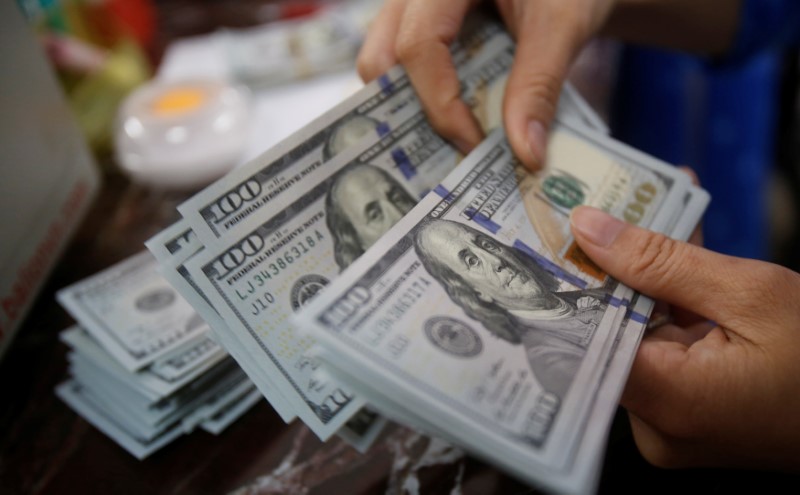Investing.com - This week investors will be turning their attention to U.S. inflation reports after the Federal Reserve said last week that it is likely to keep interest rates steady for an extended period.
President Donald Trump has cited low inflation in his calls for the Fed to cut interest rates. Fed Chair Jerome Powell however played down recent weakness in U.S. inflation as "transitory”.
Market watchers will also be keeping an eye on U.S.-China trade talks amid hopes that that a deal to end the months-long trade conflict between Washington and Beijing is getting closer.
The dollar was lower against a currency basket on Friday as traders focused on the weaker aspects in the April U.S. payrolls report, brushing aside stronger-than-forecast hiring and a drop in the jobless rate to the lowest in more than 49 years.
The modest 0.2% monthly pace of wage growth and the drop in the job participation rate prompted some to sell the greenback, analysts said.
“These soft details didn’t provide a compelling reason to add to already pretty big long dollar positions,” said Eric Viloria, currency strategist at Credit Agricole in New York.
The U.S. dollar index that tracks the greenback against a basket of six currencies was 0.4% lower at 97.197 late Friday, for a weekly decline of 0.54%.
The euro was up 0.24% at $1.1202 after hitting a one-week low at $1.1135, while the dollar was 0.35% weaker at 111.09 yen.
The single currency gained 0.4% versus the greenback on the week, while the dollar fell 0.4% against the yen.
The dollar was also pressured after the Institute for Supply Management said its services index posted a surprise drop to a 20-month low in April.
Comments from Chicago Fed President Charles Evans and St. Louis Fed President James Bullard supported bets the U.S. central bank might lower key lending rates by the end of the year even though Fed Chairman Jerome Powell said two days earlier he did not see the need to raise or cut rates right now.
Evans said at an event in Stockholm that lower U.S. rates may be needed if the economy softens.
Bullard told CNBC television the Fed’s policy rate is “a little tight” and current readings of inflation are uncomfortably low.
Meanwhile, the Australian and New Zealand dollars ended the week lower amid speculation that both countries’ central banks could cut interest rates next week.
The Reserve Bank of Australia meets on Tuesday and the Reserve Bank of New Zealand the day after. Each may cut rates amid concerns over low inflation reports, analysts said.
Ahead of the coming week, Investing.com has compiled a list of significant events likely to affect the markets.
Monday, May 6
EU Services, Composite PMI (April)
EU Retail Sales (March)
Chicago Fed President Evans Speaks
FOMC Member Harker Speaks
FOMC Member Williams Speaks
ECB's Praet Speaks
Tuesday, May 7
RBA policy meeting
FOMC Member Kaplan Speaks
FOMC Member Quarles Speaks
China Trade Balance (Apr)
Wednesday, May 8
RBNZ policy meeting
China CPI, PPI (Apr)
ECB Monetary Policy Minutes
Germany industrial production (Mar)
Thursday, May 9
U.S. PPI (Apr)
U.S. Fed Chair Powell Speaks
U.S. Initial Jobless Claims
U.S. Trade Balance (Mar)
Friday, May 10
German Trade Balance (Mar)
French Industrial Production (Mar)
U.K. GDP, industrial production, trade balance
U.S. CPI (Apr)
FOMC Member Bostic Speaks
--Reuters contributed to this report
